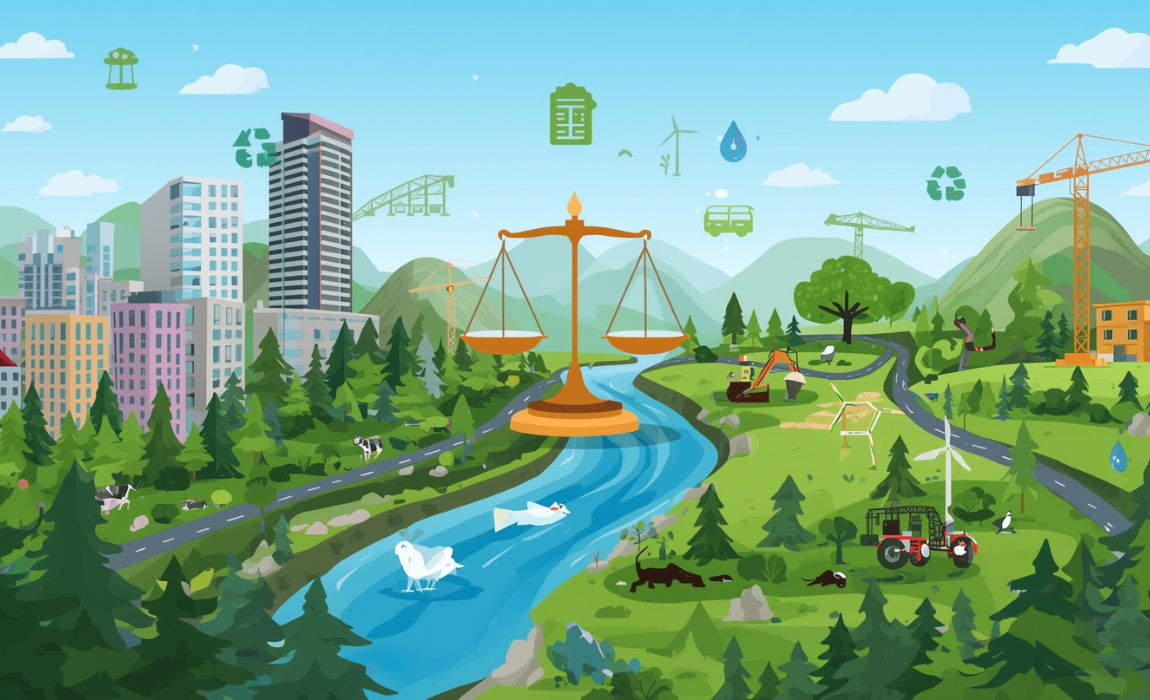
"Environmental Law: Balancing Development and Conservation"
The 21st century faces one of its greatest dilemmas: how to grow economically without destroying the very environment that sustains us. Nations want highways, industries, and urban expansion, but at the same time, forests, rivers, and biodiversity are under immense pressure. In this struggle between development and conservation, environmental law stands as the bridge that tries to bring balance.
The role of environmental law is twofold: to protect natural resources and to guide sustainable development. It ensures that economic progress does not come at the cost of clean air, safe water, and a stable climate. Laws governing pollution control, forest protection, wildlife conservation, and waste management are not just technical rules—they are safeguards for the survival of both nature and humanity.
The concept of sustainable development lies at the heart of this balance. It means meeting the needs of today without compromising the needs of future generations. Courts in many countries, including India, have invoked this principle to ensure that projects such as dams, factories, or mining ventures consider environmental costs alongside economic gains. For example, the principle of the “polluter pays” has become a cornerstone of environmental law, making those who damage the environment responsible for restoring it.
However, the implementation of these laws is never easy. Governments often face pressure to approve industries and infrastructure in the name of jobs and growth. Environmental impact assessments, though required by law, sometimes become mere formalities. Projects move forward despite serious risks to ecosystems and communities. In such cases, courts and civil society play a vital role by questioning approvals, demanding stricter checks, and ensuring that long-term ecological interests are not sacrificed for short-term gains.
Another pressing challenge is climate change. Rising global temperatures, extreme weather events, and melting ice caps are no longer distant warnings; they are today’s reality. Environmental laws now extend beyond local pollution or deforestation to address carbon emissions, renewable energy adoption, and climate resilience. International agreements such as the Paris Accord push countries to reduce emissions, while national laws provide mechanisms to shift toward cleaner technologies. But the pace of change remains uneven, with many nations struggling to balance industrial growth with global climate commitments.
Equally important is the protection of indigenous and local communities. Often, large-scale development projects displace people from their ancestral lands or threaten their traditional ways of life. Environmental law increasingly recognizes that conservation is not just about protecting forests or animals, but also about safeguarding the rights of communities who depend on nature for survival. Including local voices in decision-making is crucial for both fairness and effective conservation.
Technology is also reshaping environmental law. Satellite monitoring, drones, and data analytics now allow authorities to track illegal mining, forest destruction, and pollution in real time. Transparency through public access to environmental data strengthens accountability. Citizens are no longer passive observers—they can raise concerns, file petitions, and demand enforcement of environmental norms.
In the end, environmental law is not about choosing between development and conservation, but about finding the balance where both can coexist. True progress cannot come by exhausting natural resources; it must come by using them wisely. Laws that protect the environment are not obstacles to growth but safeguards for a healthier, more sustainable future.
Conclusion:
The task ahead is clear but challenging. Stronger laws, stricter enforcement, international cooperation, and active citizen participation are needed to ensure that development is not blind to ecological realities. The real measure of success will be when highways, factories, and cities grow alongside clean rivers, thriving forests, and a stable climate. Only then can we say that we have struck the right balance between development and conservation.
